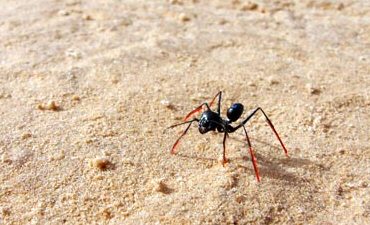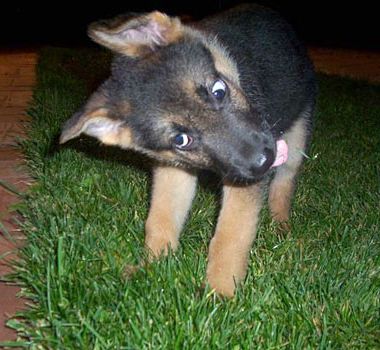Animal Algorithms
Awesome experiment reported at nationalgeographic.com:

How do ants return home in a straight line, even after improvising random, twisty routes to find food? To find out, scientists attached tiny stilts to some insects and half-amputated others.Yep, a lucky few got stilts glued their 'feet' while the less fortunate ants got all of their legs amputated and were forced to walk home on their bleeding exoskeletal stumps.
For the ants on stilts, each step now covered more distance than they were used to. They overshot the nest, running an average of more than 50 percent farther than they should have. Those with shortened legs undershot by nearly as much.The result that totally blew my mind was this:
Interestingly, the ants quickly adjusted to their new leg lengths. After the initial experiment, the ants were promptly returned to their nest. The next day the modified ants were allowed to engage in normal foraging, and they returned to the nest as well as the "normal" ants.So ants are basically integrating their current distance from the nest as they explore, tracking their orientation and counting on their internal pedometers. Amazing stuff.
That tiny bundle of neurons inside the head of each ant can totally beat anything we can do with computers, so it's cool
 to see what kind of 'algorithms' have evolved in animal brains. Reminds me of a talk I saw about this paper where they studied how praying mantises judge the distance to their prey. A mantis will bob its head left and right in order to gauge the exact distance to leap forward at the target (based on the degree of the target's lateral movement in their field of vision). According to the authors, pigeons actually bob their heads forward and back for the same reason. Neato!
to see what kind of 'algorithms' have evolved in animal brains. Reminds me of a talk I saw about this paper where they studied how praying mantises judge the distance to their prey. A mantis will bob its head left and right in order to gauge the exact distance to leap forward at the target (based on the degree of the target's lateral movement in their field of vision). According to the authors, pigeons actually bob their heads forward and back for the same reason. Neato!






